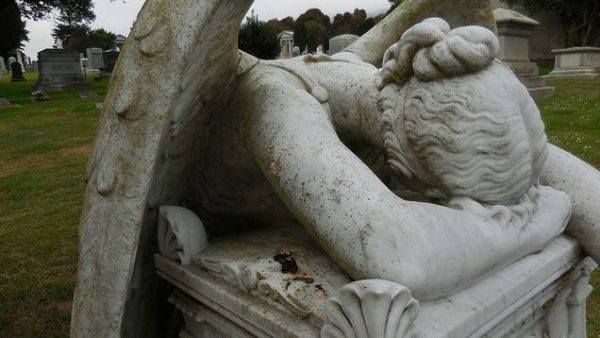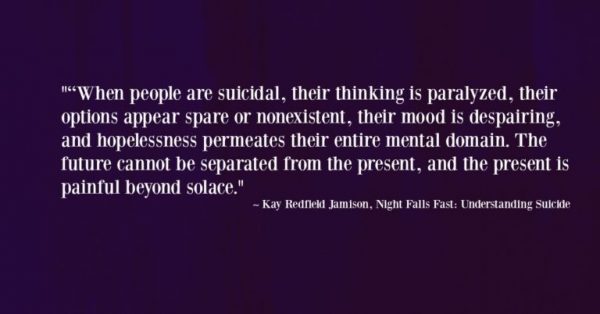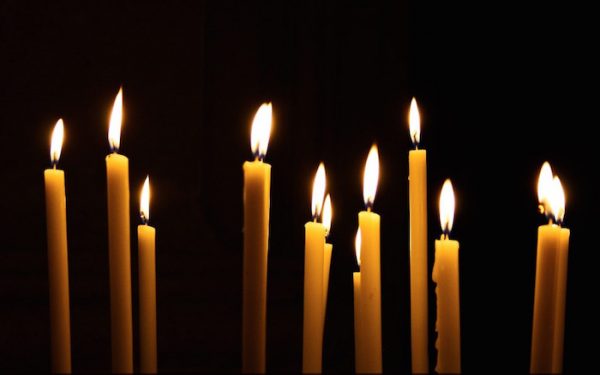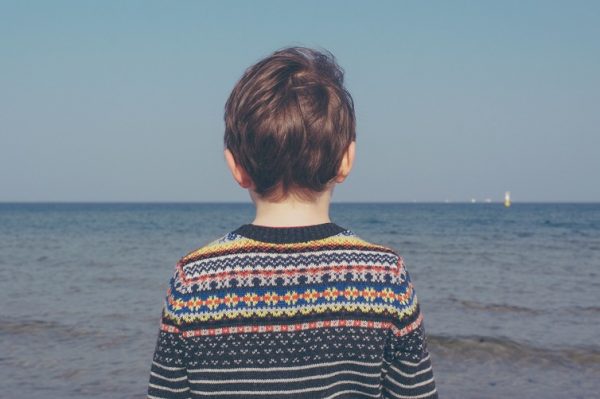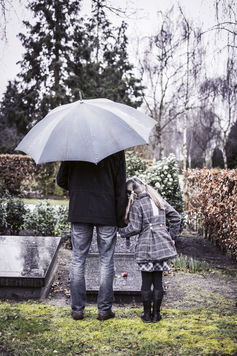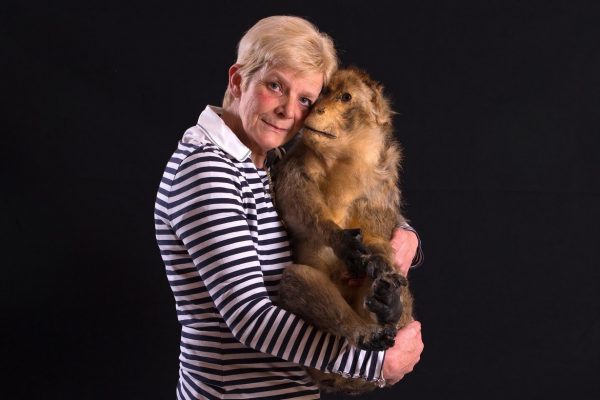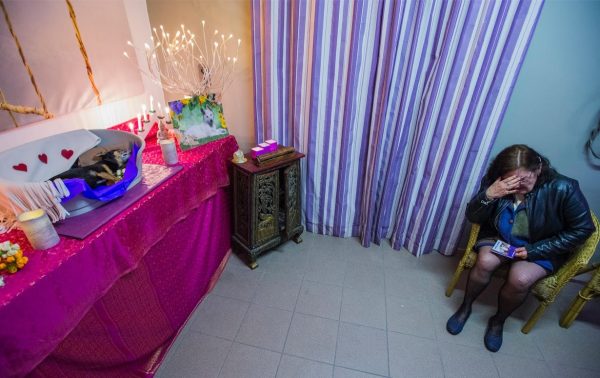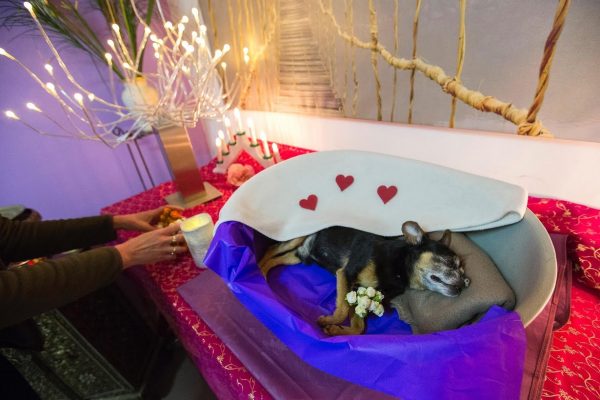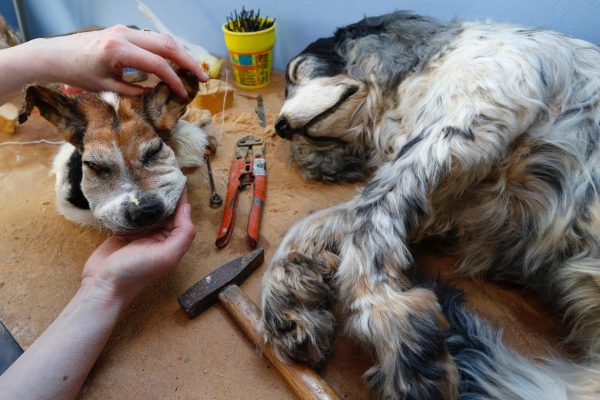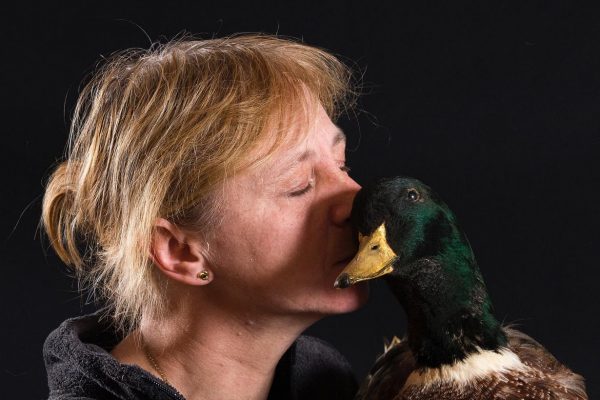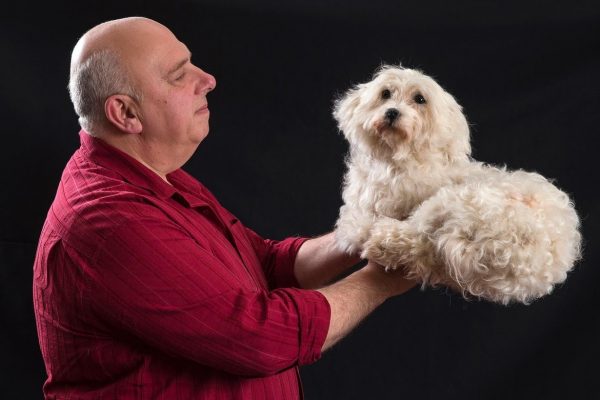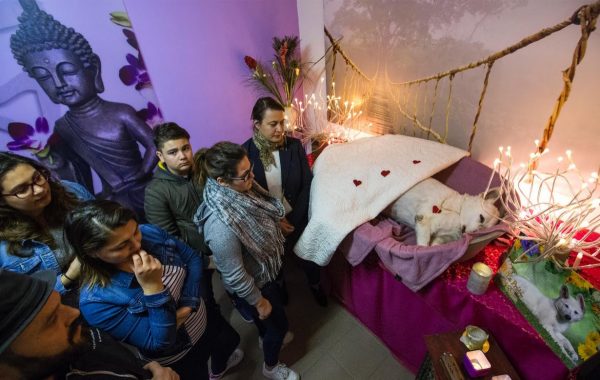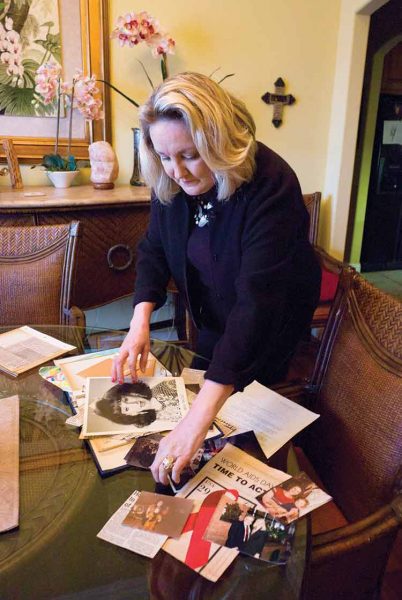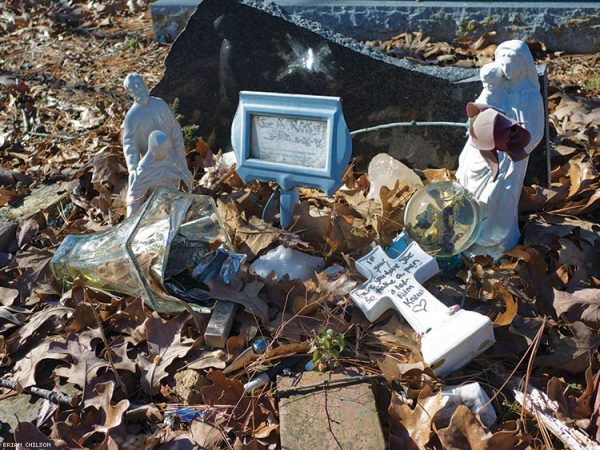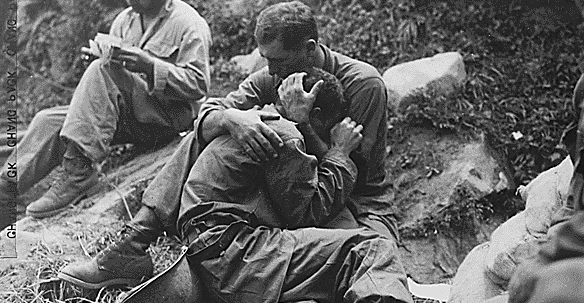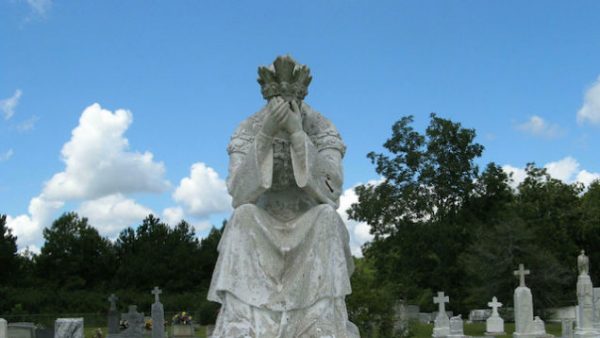By Eleanor
According to Centers for Disease Control and Prevention in 2013 there were 41,149 suicides in the United States. This rate is equal to 113 suicides each day or one every 13 minutes. Surveys have shown that 40% of adults know at least one person who has died by suicide and upwards of 20% of adults report their lives have been significantly impacted by suicide.
I’m sorry we didn’t write this post sooner.
I have a lot I want to cover, so I won’t waste time on introductions. I do realize, though, that some of you won’t read this post all the way through. For those of you who know yourselves well enough to know you won’t finish, I want to let you know that I will link to additional resources at the end of this post. Also, I want to invite anyone who has been touched by suicide to share your experiences in the comments below. Although we can offer general thoughts on this subject, it is your insight that adds truth and nuance to this discussion and helps those facing similar circumstances feel less alone.
First things first, our usual disclaimer…
Although commonalities exist amongst people who have experienced a certain type of loss, individual grief is unique to the person experiencing it and their relationship with the person who died. Although we can talk in averages and generalities, no article, grief theory, or set of symptoms will ever perfectly sum up your grief experience. Further, although you might be able to relate to aspects of another person’s grief (and vice versa), no one can completely understand how anyone else feels. With this in mind, we recommend you learn what you can from your commonalities with other grievers, but take differences with a grain of salt.
How we talk about suicide…
Although we may have a long way to go in understanding suicide and effective suicide prevention, thankfully progress has brought us far beyond the dark days when suicide was looked upon as a crime or religious offense. Progress, though, is multifaceted and while our understanding of suicide has grown more compassionate, our language has not.
For this reason organizations like the World Health Organization, National Institute for Mental Health, American Association for Suicidology, American Foundation for Suicide Prevention and countless others have been working to shift suicide-related terminology. Although there are many fine points to this conversation, I simply want to impress the following upon you…
When referring an individual’s death from suicide…
Don’t say…“She committed suicide.”
Do say… “She killed herself” or “She died by suicide”
I know most of you are used to saying “committed suicide” and you certainly aren’t alone. Many people in our society have yet to get this memo, but now you have. Please, the time has come for us to choose language around suicide that does not condemn or stigmatize the person who has died or those who love them.
Suicide as a traumatic loss…
When a loved one kills themselves, the death is often experienced as traumatic. We typically use Wortman & Latack (2015) definition of traumatic loss…
“A death is considered traumatic if it occurs without warning; if it is untimely; if it involves violence; if there is damage to the loved one’s body; if it was caused by a perpetrator with the intent to harm; if the survivor regards the death as preventable; if the survivor believes that the loved one suffered; or if the survivor regards the death, or manner of death, as unfair and unjust.”
This definition touches on many experiences common to suicide death including the death being sudden, untimely, violent, regarded as preventable, etc. However there are other traumatic loss risk factors associated with suicide such as feelings of blame, witnessing the death, and finding the body. Deaths that are also potentially traumatic events can result in trauma and grief responses compounding and intertwining. These may manifest as the following (these are just a few so if you’d like more information on grieving a traumatic loss, head here):
- Recurrent intrusive thoughts about the death
- Shattered assumptions about the world, onself, and others
- Feelings of guilt and blame
- Fear and avoidance of grief and trauma reactions, etc.
It’s important to note, it is not the nature of a death that makes it traumatic, rather how the event is interpreted and processed by the individual. This means that, regardless of the circumstances around the death, it is not a given that it will be experienced as traumatic. One cannot underestimate the impact of personal factors like emotional regulation, cognitive responses, secondary stressors, coping style, prior history of trauma, and access to support and resources in determining how a person responds to an event.
When grieving a suicide death one may experience…
The search for answers:
In the wake of death, people often seek to construct a meaningful narrative that helps them to find peace and understanding in what happened. So asking questions like “what if?”, “why?”, and “what’s the point?” is a common grief response.
After a suicide death, as with any other type of death, the bereaved seeks to make sense of what happened. However in this instance they may find that many of their questions are either unanswerable or lead to undesirable conclusions (whether these conclusions are true or not).
Until the question of “why” can be answered, grieving family and friends may continue to search and ruminate. It is not uncommon for themes of personal blame to arise as a person questions their role in their loved one’s suicide and what they could have done to prevent their death. Unfortunately, the bereaved may vastly overestimate their own role and the role of others (i.e. what family and friends did or didn’t do), as opposed to blaming things like mental illness which is quite often present. Whether rational or not, grieving family and friends may struggle with distressing thoughts like…
- I never really knew him.
- She didn’t feel comfortable confiding in me.
- She was in intense pain
- I’m to blame. I should have done more to prevent his death.
- I’m to blame. I pushed him into the decision to kill himself.
- She didn’t love me enough to live.
- My family members are to blame.
The impact of expectedness…
Although suicide is often sudden, it is not always unexpected and so not all who experience the death of a loved one struggle to answer the question of “why?”. In many instances there has been discussion of suicidal thoughts or past suicide attempts. Maple et al (2007) found in interviews with suicidally bereaved parents that “preparedness” was linked with an ability to anticipate and explain their child’s death. They note,
“Once they had acknowledged the inevitability of suicide they were able to weave this possibility, unwelcome as it was, into their life story to develop a coherent explanation.”
Family conflict:
Family can be an incredible source of comfort and healing after a death.
Family be a source of distressing conflict and misunderstanding after a death.
Which of these statements is true? Both…sometimes within the same family at the same time!
Regardless of the circumstances surrounding the death, things like complicated family dynamics, shifting roles, and different coping styles can test and challenge a family. After a suicide death additional conflict may emerge because…
- The deceased’s mental illness and suicidal behavior created disruption and placed strain on the family as a whole.
- Family members disagree about how they want to acknowledge the death publicly or how they want to discuss the death privately within the family.
- Different family members come up with different explanations for why their loved one killed him- or herself
- Blame
Feelings of rejection and abandonment:
Evidence has shown that suicidally bereaved individuals experience higher levels of rejection compared with other bereaved groups. In grief, feelings of guilt, blame, regret, and rejection defy all logic and reason. Even when it’s evident that the suicide was not an act of intentional abandonment, it may feel that way to the people left behind in death’s wake.
Worries about developing mental illness:
Approximately 90% of those who die by suicide have one or more mental disorders. When the deceased is connected to the bereaved through genetics, especially in the instance of a child grieving a parent’s suicide death, they may worry that they too will develop mental illness and some day make the choice to kill themselves.
Indeed, some research has indicated that a family history of suicide increases suicide risk. So if you know a child, or adult for that matter, struggling with these concerns don’t immediately disregard their worries. If you are someone grappling with this concern, know that it is normal and if you’re really worried then it never hurts to seek out a little support and psycho-education from a therapist or counselor.
Fear of grief reactions:
After a death mourners often feel as though they are going crazy, and, as noted, those who have experienced a traumatic loss often experience intensified and prolonged grief/trauma reactions. If a person interprets their symptoms as dangerous, threatening, or indicative of a larger mental or physical problem, they are more likely to fear and inhibit their reactions. Concerns about one’s own reactions following a death add to existing emotion by causing additional anxiety, depression, anger or shame. Those who are fearful of their reactions may also engage in maladaptive and persistent avoidance of triggers or reminders which can contribute to the development of postraumatic stress disorder and which prevent the mourner from finding meaningful ways to continue their bond with their loved one.
Relief:
It is common for a person to feel relieved after a loved one dies when the loved one had been living in pain and suffering. For those who die from illness, the relief comes from knowing they are no longer in physical pain. And when a person dies from something like suicide or overdose, the relief may come from a place of knowing that their loved one is no longer struggling with emotional pain.
One may also feel relief if the loved one’s suicidal behavior (or other types of behavior) had previously put a strain on the family. This doesn’t mean that the person grieving the loss wouldn’t trade their relief to have their loved one back for just one moment, or that they don’t also feel intense pain and sadness. Relief is simply one response in their big, messy, hurricane of grief.
Feelings of isolation, stigma and/or shame:
Sadly, there is a stigma attached to mental illness and suicide. Others can’t imagine the mental and emotional pain that would cause a person to kill themselves and so they might make assumptions or judge the deceased’s actions, calling them weak or selfish or who knows what else.
This being the case, it’s no wonder that many people choose not to open up about their loved one’s death. Stigmatized losses may also be referred to as disenfranchised losses, which you can read more about here. The following are just a few potential causes for isolation, stigma, and shame following a suicide death:
- Isolation and shame may result from the family’s decision to keep the suicide a secret. Feeling unable to acknowledge the truth, those grieving the loss may feel as though they have to lie or live in silence.
- Shame may result from thoughts of personal blame and responsibility.
- Shame may result from the belief that one can’t control or manage their own grief reactions.
- Isolation and shame may result from a lack of social support or because others don’t acknowledge the death.
- Shame, isolation and stigma may be felt in response to messages from media and broader society about suicide
- Isolation may result from perceived rejection and thoughts of worthlessness.
Complete Article HERE!

